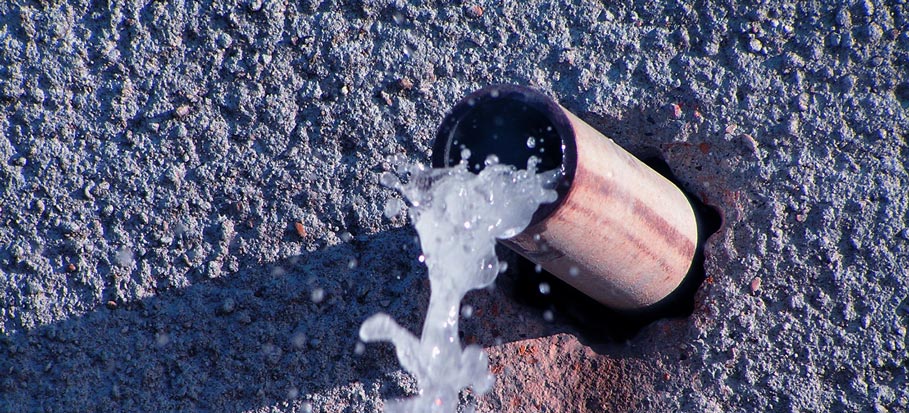Just how to Check If Your Home Has a Covert Leak
Just how to Check If Your Home Has a Covert Leak
Blog Article
This post down below pertaining to Finding hidden leaks is rather remarkable. Check it out for yourself and see what you think about it.

Early discovery of leaking water lines can reduce a potential catastrophe. In addition to saving you cash, it will minimize the aggravation and frustration. The minute you find a leakage, calling your plumber for fixings is the best option. However, some small water leakages might not show up. If you can not find it with your naked eyes, right here are some hacks that assist.
1. Analyze the Water Meter
Examining it is a proven way that helps you find leakages. If it relocates, that indicates a fast-moving leakage. This suggests you may have a slow leak that can also be below ground.
2. Examine Water Consumption
Assess your water costs and also track your water usage. As the one paying it, you need to notice if there are any disparities. If you detect sudden changes, regardless of your intake being the same, it indicates that you have leaks in your plumbing system. Bear in mind, your water bill must drop under the same array each month. An unexpected spike in your bill shows a fast-moving leak.
A constant rise every month, also with the very same behaviors, shows you have a slow leakage that's also slowly escalating. Call a plumber to completely examine your property, specifically if you really feel a cozy area on your floor with piping underneath.
3. Do a Food Coloring Test
When it comes to water intake, 30% comes from toilets. If the color somehow infiltrates your bowl during that time without flushing, there's a leak between the container and also bowl.
4. Asses Exterior Lines
Don't fail to remember to examine your outdoor water lines too. Test faucets by affixing a garden tube. Needs to water leak out of the connection, you have a loosened rubber gasket. Replace this and also make sure all links are limited. It will aid obtain it professionally took a look at and also kept each year if you have actually got a sprinkler system. One tiny leak can waste lots of water and spike your water expense.
5. Check as well as Evaluate the Circumstance
Homeowners ought to make it a routine to check under the sink counters and also inside closets for any kind of bad odor or mold development. These 2 red flags suggest a leak so punctual attention is called for. Doing routine assessments, even bi-annually, can conserve you from a major issue.
Examine for discolorations and damaging as most pipes and appliances have a life span. If you believe dripping water lines in your plumbing system, do not wait for it to intensify.
Early detection of leaking water lines can reduce a prospective disaster. Some small water leakages may not be visible. Checking it is a proven way that assists you find leaks. One small leak can squander heaps of water and also increase your water bill.
If you believe leaking water lines in your plumbing system, do not wait for it to escalate.
WARNING SIGNS OF WATER LEAKAGE BEHIND THE WALL
PERSISTENT MUSTY ODORS
As water slowly drips from a leaky pipe inside the wall, flooring and sheetrock stay damp and develop an odor similar to wet cardboard. It generates a musty smell that can help you find hidden leaks.
MOLD IN UNUSUAL AREAS
Mold usually grows in wet areas like kitchens, baths and laundry rooms. If you spot the stuff on walls or baseboards in other rooms of the house, it’s a good indicator of undetected water leaks.
STAINS THAT GROW
When mold thrives around a leaky pipe, it sometimes takes hold on the inside surface of the affected wall. A growing stain on otherwise clean sheetrock is often your sign of a hidden plumbing problem.
PEELING OR BUBBLING WALLPAPER / PAINT
This clue is easy to miss in rooms that don’t get much use. When you see wallpaper separating along seams or paint bubbling or flaking off the wall, blame sheetrock that stays wet because of an undetected leak.
BUCKLED CEILINGS AND STAINED FLOORS
If ceilings or floors in bathrooms, kitchens or laundry areas develop structural problems, don’t rule out constant damp inside the walls. Wet sheetrock can affect adjacent framing, flooring and ceilings.
https://www.servicemasterbyzaba.com/blog/how-to-detect-water-leakage-in-walls/

As a reader about Locating water leaks, I figured sharing that piece of writing was worth the trouble. In case you liked our blog posting kindly be sure to pass it around. Thanks for going through it.
Report this page